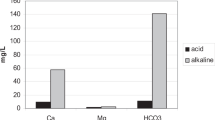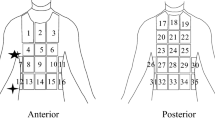Abstract
ON the Witwatersrand gold mines, where the Bantu mine labourers work under hot humid conditions, cases of scurvy and sub-scurvy occur with some frequency, despite the fact that the diet provided has been shown to contain adequate amounts of vitamin C (some 20–30 mgm. daily). The explanation given is that the high energy requirement increases utilization of the vitamin. However, on testing sweat samples collected from recruits undergoing a 'heat tolerance' test under conditions approaching those encountered underground (shovelling gravel at 97° F. dry and 96° F. wet bulb for one hour in a surface chamber), it was found that sweat reduced indophenol dye under conditions regarded as specific for the vitamin1.
This is a preview of subscription content, access via your institution
Access options
Subscribe to this journal
Receive 51 print issues and online access
$199.00 per year
only $3.90 per issue
Buy this article
- Purchase on Springer Link
- Instant access to full article PDF
Prices may be subject to local taxes which are calculated during checkout
Similar content being viewed by others
References
Emmerie, A., and van Eekelen, M., Biochem. J., 28, 268, 1153 (1934); 30, 25 (1936).
Bernstein, B. E., and Weiner, J. S., S. Afr. J. Med. Sci., 2, 37 (1937).
Orenstein, A. J., Africa, 9, 218 (1936).
Heinemann, M., Biochem. J., 30, 2299 (1936).
Author information
Authors and Affiliations
Rights and permissions
About this article
Cite this article
BERNSTEIN, R. Excretion of Vitamin C in Sweat. Nature 140, 684–685 (1937). https://doi.org/10.1038/140684c0
Issue Date:
DOI: https://doi.org/10.1038/140684c0
This article is cited by
-
Optoelectronic sensing of biophysical and biochemical signals based on photon recycling of a micro-LED
Nano Research (2021)
-
�nderungen der Ascorbins�ure-Ausscheidung bei k�rperlicher Arbeit
Arbeitsphysiologie (1950)
-
Excretion of ascorbic acid
Irish Journal of Medical Science (1944)
Comments
By submitting a comment you agree to abide by our Terms and Community Guidelines. If you find something abusive or that does not comply with our terms or guidelines please flag it as inappropriate.



